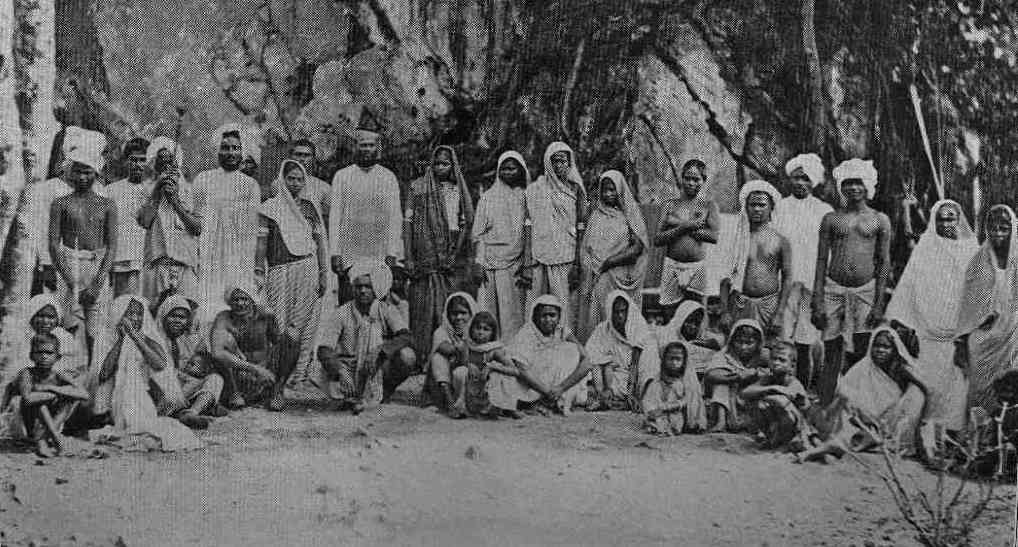May 14 remembered as the Girmitya Day by Fiji Indians in Fiji and in Australia

May 14 is remembered as the Girmitya Day by the Fiji Indians in Fiji and here in Australia. “Girmityas” or Indentured labourers, is the name given to the Indians who left India in the middle and late 19th Century to serve as labourers in the British colonies, where the majority eventually settled. Girmit is a corrupt form of the English word “Agreement”. A labour emigrating under the Agreement or Girmit was called a “Girmitya”.

The plan involved bringing the Indian workers to Fiji on a five-year contract, after which they could return to India at their own expense; if they chose to renew their contract for a second five-year term, they would be given the option of returning to India at the government’s expense, or remaining in Fiji.
Over 60,500 labourers who were transported to the Fiji Islands over a period of 37 years (1875 ”“ 1916) to work on the plantations of Fiji. Between 1879 and 1916, a total of 42 ships made 87 voyages, carrying Indian indentured labourers to Fiji. Initially the ships brought labourers from Calcutta, but from 1903 all ships except two also brought labourers from Madras and Mumbai.
The British and other European colonial powers started the Indian indenture system in 1838, as a cheap source of labour to their colonies after African slavery was abolished in 1833. Under this system, some 1.2 million Indians were displaced from India to the colonies between 1838 and 1916. The conditions were really bad and abuse was rampant, workers exploited and overworked in the plantations in Fiji with Girmityas working and living under terrible living conditions. Many realised that contractors did not even honour the contract and either didn’t pay them while making them work from 4am to evening with little time left for them or the family. The Girmityas of Fiji cut across 265 castes and sub-castes, but almost all were connected with agriculture. Many were taken from India on false pretence and promises by the recruiting agents, some just simply captured and gone missing. It is a great pride how the Fiji Indians have maintained Indian culture and traditions, even the stories of Ramayana they sing with great devotion during the festival days.
A large Indian diaspora as indentured labour also went to the Caribbean, Natal, Réunion, Mauritius, Sri Lanka, Malaysia, Myanmar, Surinam, and to Fiji. From 1838 to 1917, over half a million Indians from the former British Raj or British India and Colonial India, were taken to thirteen mainland and island nations in the Caribbean as indentured workers to address the demand for sugar cane plantation labour. Many elected to stay on in the colonies at the end of their term of engagement. Thus there were Indian communities in South Africa, in Malaya, Fiji, in East Africa as well as in the Caribbean. Australia also had indentured labour from India to work in sugarcane plantations of which now we see many Sikhs living in and around Woolgoolga who are third or the fourth generation Indians and make up almost 50 per cent of the total population.
Fiji prospered under the hard working Indians, so did Australia where the labourers were also used to build train lines and network. The famous Ghan rail link is named after the Afghans cameleers who carried construction material on camels. The enormous contribution made by the Indian indentured labour in Fiji, in Australia, a budding colony of the British can never be overlooked.
List of Indentured Indian labour to: Mauritius 453,063; British Guyana 238,909; Natal 152,184; Trinidad 143,939; Fiji 60,965; Jamaica 36,412; Surinam 34,304; East Africa 32,000; Reunion 26,507; Seychelles 6,315; St Lucia 4,350; Grenada 3,200; St Vincent 2,472; St Kitts 337 – TOTAL 1,194,957
Short URL: https://indiandownunder.com.au/?p=13246
